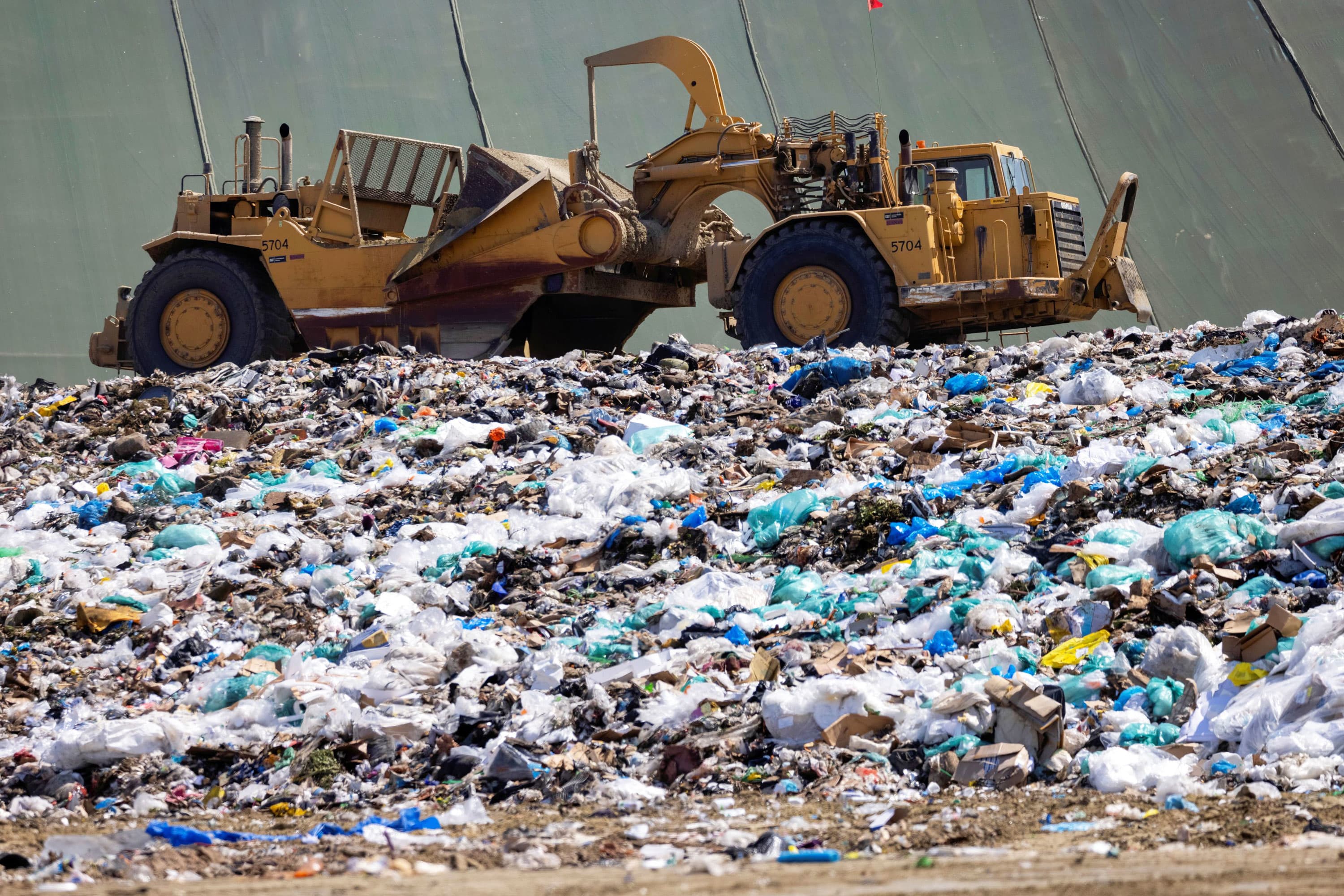
A rising industry
America has long remained one of the most wasteful countries in the world, generating 239 million metric tons of garbage every year, about 1,600 to 1,700 pounds per person. While some view it as a threat to our environment and society, the solid waste management industry sees an opportunity.
“It’s a profitable industry,” according to Debra Reinhart, a member of the Board of Scientific Counselors for the EPA. “It’s a difficult industry but it is profitable if it’s done right.”
Two private companies, Waste Management and Republic Services, lead the solid waste management sector. Together they own about 480 landfills out of the 2,627 landfills across the United States. The two companies have seen staggering performance in the market, with the stock prices of both doubling in the past five years. Both Waste Management and Republic Services declined CNBC’s request for an interview.
“They’ve learned how to be best-in-class businesses,” said Michael E. Hoffman, a managing director at Stifel Financial. “Their publicly traded stocks outperformed the market handily between 2015 and 2019 and underpinning it is a meaningful improvement in their free cash flow conversion.” The stocks have continued to outperform.
Tipping fees
Since its inception, landfills have made a majority of their revenue via tipping fees. These fees are charged to trucks that are dropping off their garbage based on their weight per ton.
In 2020, municipal solid waste landfills had an average tipping fee of $53.72 per ton. That translates to roughly $1.4 million a year in approximate average gross revenue for small landfills and $43.5 million a year for large landfills just from gate fees.
Tipping fees have seen steady growth over the past four decades. In 1982, the national average tipping fee sat at $8.07 per ton or about $23.00 when adjusted for inflation. That’s nearly a 133% increase in 35 years.
While tipping fees make landfills sound like a risk-free business, they are still quite an expensive investment. It can cost about $1.1 million to $1.7 million just to construct, operate and close a landfill. For this reason, private companies have replaced municipal governments to own and operate the majority of the landfills across the U.S.
“I think it’s because the trend has been to go larger and larger so the small neighborhood dump can’t exist because of the regulations and the sophistication of the design,” Reinhart said. “So we are tending to see large landfills, which do require a lot of investment upfront.”
Privatization of landfills
Private companies have also played an important role in discovering new ways beyond tipping fees to turn a profit out of garbage. Landfill mining and reclamation, a process of extracting and reprocessing materials from older landfills, is one of them.
In 2011, a private scrap metal company contracted with a nonprofit landfill in southern Maine to mine precious metals. In four years, they recovered more than 37,000 tons of metal worth $7.42 million.
But it isn’t always a success story. In 2017, the city of Denton, Texas, ended its landfill mining program before it could even start after realizing that the benefits weren’t worth its $4.56 million price tag. According to experts, economics is usually the biggest challenge to make landfill mining work.
“There’s virtually no way I can see how that makes money,” said Hoffman. “The commodity values would have to be at such higher levels than they are today for whatever it is you’re trying to get your hands on.”
Meanwhile, some experts argue that landfill mining can be profitable if done correctly by recovering more space for tipping fees.
“Many people are mining but they’re not reusing the space,” according to Sahadat Hossain, professor of civil engineering at the University of Texas at Arlington. “If you do the operation right, you’re never going to be involved and it will always make you money.”
Landfill gas to energy
Modern chemistry has also allowed landfills to be mined for energy, using methane gas that is produced from decaying trash. According to the U.S. Energy Information Administration, landfill gas generates about 10.5 billion kilowatt-hours of electricity every year. That’s enough to power roughly 810,000 homes and heat nearly 547,000 homes each year.
“The landfill gas operations that are known as low or medium DTU which are the predominant form of capturing the gas and turning it into electricity or steam and then selling it? Those are very good returns on capital projects,” Hoffman said.
While revenue from generating energy and fuel isn’t quite impressive, landfills that participate do benefit greatly from generous subsidies. The tipping fee, combined with various mining techniques and government subsidies have altogether transformed the landfill industry into a booming business.
The solid waste management industry will only continue to expand as long as there are those who view garbage as a resource rather than waste. Because when it comes to landfills, one man’s trash is quite literally another man’s treasure.
“Waste is not a waste, but it’s a resource,” emphasized Hossain. “World has limited resources. If we don’t reuse and recycle these, we cannot talk about a circular economy. That will always be a talk in the tabletop discussion.”


